The prime minister of Turkey, Recep Tayyip Erdogan, was not so understanding. His motorcade was arriving at the Sheraton Hotel while a “POTUS Freeze” was in place. The Secret Service agent in charge of Erdogan’s detail asked him to wait until Obama’s motorcade had departed, but the Turkish prime minister did not heed the advice. He opened the door to his car, and armed Turkish agents began exiting the other vehicles in the motorcade. “Don’t do that!” the American detail leader shouted. But Erdogan’s entourage nonetheless approached Obama’s departure tent. An agent in the Presidential Protective Detail, having no idea who these foreign guys with guns were, yelled into his handheld mike, “Crash it! Crash the tent!” Within moments, a dozen agents were out of their cars in full sprint, guns drawn, and the Turks were forcibly detained.
The incident was over within 20 seconds, but the Turkish delegation was mightily offended. It canceled several events in New York, while the Secret Service and the State Department apologized and tried to smooth hurt egos. Although agents had done exactly what they were supposed to do, the service initiated a full review, and procedures were altered to ensure that presidential motorcades didn’t intersect with waiting dignitaries in the future.
The incident was over within 20 seconds, but the Turkish delegation was mightily offended. It canceled several events in New York, while the Secret Service and the State Department apologized and tried to smooth hurt egos. Although agents had done exactly what they were supposed to do, the service initiated a full review, and procedures were altered to ensure that presidential motorcades didn’t intersect with waiting dignitaries in the future.
The Atlantic Home
March 2011
Inside the Secret Service
When President Obama and two-thirds of the world’s leaders gather in New York City, it is up to the U.S. Secret Service to keep them all safe. Granted unprecedented access, our author tells the story of how the agency pulls off the most complicated security event of the year, from counter-surveillance to counter-assault, hotel booking to event scheduling.
By Marc Ambinder
Image credit: Brooks Kraft
On a warm September evening in New York City, Iranian President Mahmoud Ahmadinejad slowly walked down the staircase of his official plane, idling in a remote corner of John F. Kennedy International Airport. Waiting to greet him were a gaggle of invited (and carefully screened) journalists, U.S. consular officials, and the like. But there was at least one face in the small crowd that Ahmadinejad recognized immediately, that of a U.S. Secret Service agent whom I’ll call Jack. (For security reasons, the service prefers not to publicize the names of its agents working on protective details.) A lean, compact man in his late 40s, Jack wore what passes for a uniform in the Secret Service: dark suit with a slight, artificial paunch around the middle (the result of gun, radio, handcuffs, and badge), light-blue shirt, and red tie. This was Jack’s third stint as a senior agent on the Iran detail, but his first as detail leader. He was the man charged by the U.S. government with ensuring the safety of arguably the nation’s most public enemy.
Also see:
Graphic: The Presidential Motorcade
A detailed look at security detail that moves the president on the ground.
Jack does not consider Ahmadinejad a friend, and he is somewhat uncomfortable being one of the few Americans the Iranian leader has gotten to know firsthand. (Ahmadinejad had grown so fond of Jack’s predecessor as detail leader— an agent since promoted to a more senior position—that he’d called him by his first name, asked after his children, and even, upon arriving and departing the country, given him formal kisses on each cheek.) But Jack was nonetheless proud of the job with which he had been entrusted: protecting the life of a man with a bull’s-eye on his back, and getting him door-to-door for six days, from limo to hotel to high-level meeting, as safely and expeditiously as possible.
Ahmadinejad was in New York for the 65th United Nations General Assembly—or UNGA, typically pronounced just the way it looks. While the Iranian leader’s visit was particularly high-profile and politically fraught, it was by no means unique. In 2010, the annual event required more than 200 Secret Service details for foreign leaders, American officials, and spouses, along with another 60 or so State Department security details for lower-level protectees. (This is in addition to the thousands of New York City police officers called upon to help secure buildings and traffic routes, and lead motorcades.) Over the course of the event, 900 aircraft would fly in and out of JFK bearing dignitaries; hundreds of events across the city would need to be scouted and secured.
Yet, remarkably, the General Assembly has become an almost unremarkable event, at least by Secret Service standards. There have been 38 “National Special Security Events” since President Clinton first coined the term in a classified 1998 national-security directive. Most of these NSSEs have occurred since September 11, 2001, and 14 of them since 2007, including the two presidential conventions, President-elect Obama’s pre-inauguration whistle-stop train tour, the inauguration itself, and the 2008 and 2009 G-20 summits. The General Assembly poses greater security and logistical challenges than many, if not most, of these events. This is due in part to its size, and in part to the fact that habit is the worst enemy of protective security, and the assembly offers an extremely attractive, recurring target: many foreign leaders stay in the same hotels and attend the same events at the same times each year. But despite all this, the General Assembly has not been categorized as an NSSE since 2001. The Secret Service has it down to a science.
This is the story of a dog that didn’t bark, and of the men and women who kept it muzzled. The Secret Service receives dozens of requests each year from reporters who want a peek inside the agency; most are quickly turned down. Typically, the service provides context for media coverage of its major security events by opening its training facility in Beltsville, Maryland. There, it can put on a show—complete with motorcades and simulated attacks—in a tightly controlled environment. It took me more than 18 months to persuade the service to let me be the first reporter to see the process from the inside in a real-world, real-time situation. I was allowed access to command posts, operation centers, and other secure areas. I agreed only to withhold some details about protective methodology that would imperil the service’s ability to do its job.
In exchange, I was able to witness how a smallish, secretive federal agency under some bureaucratic duress assures security at the General Assembly, an event for which two-thirds of the world’s leaders, many of whom have been subject to past assassination attempts, gather in one of the most crowded, open cities in the world. It is the job of the Secret Service, in concert with a host of local, state, and federal agencies, to make sure nothing goes wrong.
For Jack and the rest of the Iranian detail, that meant “keeping things simple,” as he explained to me. For the week, Ahmadinejad was just another “high”—that is, someone who receives the highest level of Secret Service protection. During his stay, the Iranian president was ensconced in the smallish, 20-floor Hilton Manhattan East. The hotel remained open to regular guests, and tourists wandered freely through the lobby. No demonstrators were outside when I visited (a somewhat surprising absence, given that the day’s newspapers had disclosed the location of the hotel), but a couple dozen plainclothes police officers were stationed around the building just in case.
Ahmadinejad was in his private suite, preparing for a series of interviews with American television hosts. In the corridors outside, the Secret Service agents and Ahmadinejad’s own Iranian security detail—immediately recognizable by their open-necked collars—generally kept apart, though they were mutually respectful. The Secret Service “command post” was a hotel room with the bed removed and replaced with the tools of the trade: semiautomatic weapons, first-aid equipment, one desk with a computer and another with a radio tuned to the detail’s coded frequency, nicknamed “Mike.”
But arguably the clearest signal that Ahmadinejad was no ordinary VIP was the fact that his media appearances throughout the day all took place within the hotel itself. When the time came, he rode a dedicated elevator down to a small, makeshift studio in the basement to be interviewed—under the watchful eye of his security detail—by the likes of Larry King and Charlie Rose. The mountain, in other words, came to Mahmoud.
Paint is peeling off the clapboard sides of what looks like an abandoned warehouse on the edge of the East River in Brooklyn. During the General Assembly, the Secret Service used the building as a secure location to house at least 100 armored limousines and SUVs, as well as numbered crates containing hundreds of MP5 assault weapons and thousands of secure radios. Over the course of the event, advance agents would arrive as needed to pick up their keys, their guns, and their radios.
The warehouse is a short drive from the Secret Service’s New York field office, which occupies the (again, highly secure) top floors of an otherwise anonymous Brooklyn office building. The field office had been located in Tower 7 of the World Trade Center—along with an important CIA station and the New York emergency command center authorized by then-Mayor Rudy Giuliani—until its destruction in the September 11 attacks. For months afterward, until the money came through for a new permanent office, the Secret Service worked out of three temporary locations, leasing space from, among others, John Jay College of Criminal Justice in Midtown.
The New York field office is the service’s largest, averaging six protective assignments a week under normal circumstances as well as dozens of counterfeiting cases—responsibility for which the service, until recently a part of the Treasury Department, has fought zealously to retain. Among the James Bondian features of the facility are a state-of-the-art wire room, where the service conducts phone tracking; a locked vault full of disguises and fake-grass tarps for agents to hide beneath when on undercover assignments; and a warren of interview rooms where the service regularly conducts polygraphs, both for criminal investigations and for security-clearance applications. (The agency’s polygraphs are considered the gold standard in U.S. government.)
When I visited in June, Brian Parr, the special agent in charge of the field office, pointed out that terrorists had twice attempted to attack New York City within the past year, failing only because they’d made mistakes, not because they had been detected by law enforcement. He cited the case of Najibullah Zazi, a bus driver who was intercepted by the NYPD and the FBI as he prepared to bomb the New York City subway system in September 2009. “A year ago,” Parr told me, “I was standing in a room with 14 backpacks that had tested positive for TATP, an explosive. And that next week”—that is, when the UN would convene its 2009 General Assembly—“I had two-thirds of the world’s leaders coming to my district.”
During the 2010 assembly, a command center, code-named “Broadside,” was set up at the heart of the field office. Here, agents followed the movements of the many dignitaries and their security details in real time, in part by monitoring 16 distinct radio channels set aside for the summit. (This was considered a luxury: radio bandwidth is a precious commodity, and only 12 channels had been available the prior year.) Encryption keys for each channel are supplied by the National Security Agency, and the agents protect their radios as scrupulously as they protect their guns. “If only one radio is lost, we have to rekey every radio,” the agent in charge of this process told me.
In addition to establishing Broadside, the Secret Service also set up a tactical command post, code-named “North Star,” at a secret location in the city. North Star coordinated the counter-assault teams, the counter-sniper teams, and the hazardous-material teams—or “Hammer” squads—assigned to high-threat protectees. Run by the service’s Special Operations Division, North Star was responsible for arguably the most sensitive part of the assembly preparations. “One of the things we know,” Parr told me, “is that when things go wrong, we’ve got to get 150 world leaders and their spouses off the island”—that is, Manhattan—“in a hurry.” For weeks, the Special Operations Division scouted evacuation routes, hardened safe houses throughout the city, and secured Coast Guard assets. If a situation arose in which protectees needed to be moved to safety, counter-assault (or CAT) teams would “crash” the event and secure an evacuation pathway.
Also see:
Listening In: Secret Service radio chatter
Marc Ambinder is the first journalist allowed to listen in on a secret service radio encrypted transmission.
As a last resort in the event a leader is shot or otherwise injured, the service has what Parr calls its “secret weapon” on 24/7 standby. Dr. Maurizio Miglietta, a former chief of trauma at Bellevue who has been working these summits for years, provides the agency with a team of doctors and nurses, and sets up a mobile trauma unit at major venues. He can perform surgery on the spot, if necessary.
The primary goal, of course, is preventing any such incident. The mission begins with an extensive intelligence assessment. Agents and analysts at the Protective Intelligence and Assessment Division in Washington, D.C., prepare a detailed profile of each protectee—including information on who might wish him or her harm and why—for delivery to the New York field office. The Secret Service has access to virtually every bit of data produced by the American intelligence community; as Charlie Allen, a former top CIA officer who served as the Department of Homeland Security’s first intelligence chief, explains, “They are voracious consumers of intelligence.”
That intelligence often includes sensitive information developed by counterparts in other countries: for obvious reasons, the service has some of the closest liaison relationships with foreign intelligence agencies of any U.S. entity. Chinese and Russian protective-security teams regularly spend time with Secret Service agents to help them prepare for large events. China even invited the service to Beijing to observe its agencies’ security arrangements for the 2008 Summer Olympics. Indeed, it is an irony of the service that some of its dealings with foreign security agencies are less fraught than those with the rest of the American intelligence community.
Mark Sullivan, the director of the Secret Service, is tall and trim, with deep-set eyes. He is ready with a smile even though he occupies a job that one predecessor, Stuart Knight, called a “living nightmare in a democracy.” When I met him last April, during a nuclear-security summit convened by President Obama, he was giving senior administration officials a tour of the Multi-Agency Command Center in downtown Washington. Before I was even able to ask the question directly, he stressed to me that the service was only a consumer, not a collector, of foreign intelligence.
What Sullivan did not tell me, but I knew from other sources, was that over the past 10 years, the CIA had asked the service on at least two occasions to help develop intelligence on a visiting foreign leader—that is, essentially, to spy on the very person it was assigned to protect. Both times, the service refused.
While not confirming these details, W. Ralph Basham, who was the director of the service from 2003 to 2006, told me, “It can’t work any other way. Once you lose the confidence of those individuals you protect, once they don’t want you near them—and many of them already think we’re spying on them anyway—it would never be a workable situation.”
Recently, Sullivan had fought, and won, yet another internal battle to avoid having his agents designated as intelligence collectors, which would have led to a kind of agency schizophrenia. “Mark is absolutely right to be fighting those battles,” Basham said. Though the service and the FBI cooperate closely on terrorism threats, they’ve created an informal firewall between the FBI’s intelligence-gathering operations and the service’s protective operations.
Although no one working for the Secret Service would discuss the subject with me, other sources told me that these sometimes contradictory priorities within the intelligence community can create Spy vs. Spy–style scenarios—but with American agents on both sides. When Ahmadinejad visits the United States, for instance, the FBI’s National Security Division dispatches teams of undercover agents to keep tabs on everyone with whom he travels or meets. As a result, the Secret Service’s security detail and counter-surveillance teams not only have to look out for suspicious figures who might pose a threat to Ahmadinejad’s life; they also have to determine which of those figures might in fact be “friendly” agents conducting surveillance on behalf of the U.S. government. (Comparable situations arise during visits by the leaders of any of a number of nations with whom the United States has a fraught or hostile relationship.)
Such conflicts help explain the wariness with which some protectees view their security details. For instance, after the Secret Service’s Technical Security Division carefully swept Ahmadinejad’s limousine and hotel room for listening devices— standard practice for all protectees—Ahmadinejad’s own bodyguards swept them as well. Trust extends only so far.
Active bodyguard duty makes up just a fraction of the work performed by Secret Service agents on protective missions; they are also, as the situation demands, hotel bookers, personal schedulers, and protocol experts. And these latter roles are often as demanding as the ones that make for good Hollywood screenplays. Being assigned to “housing,” for instance, might not seem glamorous compared with serving on one of the counter-assault teams. But the truth is that CAT team members spend much of their time standing around in stairwells, watching and waiting for extreme scenarios that are very unlikely to occur. Agents working on housing, by contrast, must constantly solve problems, though some might seem mundane.
Indeed, the Secret Service is an elite travel agency of sorts, maintaining relationships with hotels across the country and negotiating rates throughout the year. Large events such as the General Assembly pose particular hurdles, as many of the better hotels sell out years in advance.
Every venue to be used must be cleared by the Technical Security Division. First, 130 dog teams, many borrowed from other agencies, sniff for explosives. Then agents conduct fire-safety surveys; coordinate the placement of chemical, biological, and radiological sensors; and, for some rooms, add bulletproof glass and blast webbing to the windows. This year, housing agents faced an additional threat to national security: bedbugs. It would have been an obvious embarrassment if any of the General Assembly protectees had been bitten by the pests that have of late plagued New York City. None were, but one agent wasn’t so lucky. As a gag, fellow agents posted his injured-in-the-line-of-duty portrait on a wall in one of the temporary offices leased by the service.
Scheduling is a still-more-complex duty at an event such as the assembly—especially, as is often the case, when foreign dignitaries prove impulsive or uncooperative. One African nation, for instance, was particularly reticent about sharing its president’s U.S. itinerary with the service. One of the agents charged with scheduling his protective detail actually resorted to sleuthing his planned movements on Google. There, he found a reference to a speech the president intended to give in Utah. The agent then called the chief of police in Salt Lake City, who was vaguely aware of the dignitary’s impending visit and managed to supply the name of the hotel where he would be staying. A call to the hotel management provided the president’s arrival and departure dates. Only then could the agent alert his colleagues in Salt Lake City to supply protective personnel—and, just as important, determine how many agents in New York could be reassigned to other duties during those dates.
Even when protectees are more forthcoming with their schedules, those schedules are prone to change at the last minute. The service has “jump teams” available to handle sudden itinerary changes—as, for example, when French President Nicolas Sarkozy opted for an unplanned jog through the lovely (but entirely unsecured) grounds of Central Park. Last year, the Afghanistan delegation belatedly canceled its General Assembly appearance altogether. One might think that the service would appreciate the manpower this would free up. But consider the number of countries whose leaders had already scheduled events with President Hamid Karzai. Those events had to be canceled, and new events planned—and it was up to the agents in the scheduling office to make sure all the new pieces fit together. One scheduling change can create a cascade of others.
On Monday morning, September 20—the day world leaders began to arrive in force for the General Assembly—all 24 copies of the New York Post sold by the gift shop of the Embassy Suites hotel in Lower Manhattan were snatched up by 8 a.m. The Secret Service had set up a special coordinating center on the 15th floor, and agents there were passing around copies of page seven, which featured a heroic photo of one of their own in action.
The day before, in the late afternoon, the motorcade belonging to Israeli President Shimon Peres had arrived near the Carlyle hotel on the Upper East Side. French President Sarkozy and his glamorous wife, Carla Bruni, were staying at the hotel and, as a result, French and American paparazzi were staked out across the street. As Peres’s limo arrived, a photographer bearing a black backpack hopped over a barricade fence and began walking quickly toward it. Agents described the subsequent events as if they happened in slow motion.
Perimeter agents and officers immediately called on the photographer to halt: Stop stop stop! But he continued crossing the street, readying his camera for a picture and, in the process, swinging his backpack forward. Under the circumstances, both items had to be viewed as potential weapons.
Two things happened at almost the same instant: an NYPD intelligence officer leapt from the lead car of the motorcade and drew his Glock, and a bulky man in a polo shirt and shorts pulled his own weapon, a SIG-Sauer P229, shouting, “Get to the ground! Get to the ground!” The latter agent was a member of a Secret Service counter-surveillance team, breaking cover to intercept the potential threat.
Facing the business ends of two pistols, the photographer had a moment of sudden insight and dropped to the ground. He was cuffed by NYPD officers, interviewed by the Secret Service, and ordered to stay the hell away from motorcades in the future. The bad news, from the service’s point of view, was that any potential assassin would now know that the service had undercover counter-surveillance teams in place. The good news: the perceived threat was shut down quickly and smoothly. And a lucky New York Post photographer had taken a stunning photograph of the incident: agent and policeman, weapons drawn, standing over the prone photographer.
The situation also served as a reminder of the importance of the service’s cooperation with local law enforcement. For the General Assembly, the Secret Service coordinates with at least 17 different federal, state, and local agencies. In particular, the service cannot do its job unless the New York police and other local agencies have done theirs. Every year brings disagreements—often the same ones, year after year. Sometimes, the Port Authority balks at providing foreign leaders with enough vehicle escorts; the service usually wins that one. The service often requests more “setback”—that is, space between motorcades and other traffic—on certain streets; the NYPD will give it just one lane. The service prefers intersection control for all high-level protectees; last year, the NYPD decided to reserve that perk for President Obama alone. The give-and-take is perennial, and frustrating, and absolutely unavoidable.
In an advance briefing, Brian Parr had reminded his agents that maintaining mutual respect with the police was crucial. “Be humble,” he said. “The NYPD is going to be valuable to you.” The photographer incident, however inconsequential, had fulfilled his prediction.
The Secret Service likes to say that its high-level protectees are given every asset that is used to protect the president of the United States. This isn’t true, of course. The Presidential Protective Detail is the holiest of holies. Everything stops for the presidential motorcade—including, during the 2009 General Assembly, the motorcade carrying a prominent world leader accustomed to near-royal treatment in his own country. He was returning to the Waldorf from the UN, but found his route unexpectedly blocked.
He tapped the agent who was driving his car. “Why are we stopped?”
“It’s President Obama,” the agent replied. “He’s departing the hotel.” The leader was silent for a moment, before shrugging and leaning back in his seat. In his country, after all, everything stopped for him.
The prime minister of Turkey, Recep Tayyip Erdogan, was not so understanding. His motorcade was arriving at the Sheraton Hotel while a “POTUS Freeze” was in place. The Secret Service agent in charge of Erdogan’s detail asked him to wait until Obama’s motorcade had departed, but the Turkish prime minister did not heed the advice. He opened the door to his car, and armed Turkish agents began exiting the other vehicles in the motorcade. “Don’t do that!” the American detail leader shouted. But Erdogan’s entourage nonetheless approached Obama’s departure tent. An agent in the Presidential Protective Detail, having no idea who these foreign guys with guns were, yelled into his handheld mike, “Crash it! Crash the tent!” Within moments, a dozen agents were out of their cars in full sprint, guns drawn, and the Turks were forcibly detained.
The incident was over within 20 seconds, but the Turkish delegation was mightily offended. It canceled several events in New York, while the Secret Service and the State Department apologized and tried to smooth hurt egos. Although agents had done exactly what they were supposed to do, the service initiated a full review, and procedures were altered to ensure that presidential motorcades didn’t intersect with waiting dignitaries in the future.
The Presidential Protective Detail always walks a fine line. On the one hand, the safety of the president is sacrosanct; on the other, the detail is extremely wary of being perceived as a kind of Praetorian Guard. Still, its security footprint is, inevitably, enormous. In his 2010 book, The Kennedy Detail, former agent Gerald Blaine said he was aghast at the scope of the protective detail at a 2008 event for a presidential candidate he declined to identify: close to 60 agents and law-enforcement officers—for someone who was only campaigning to be president.
Since the Kennedy assassination in 1963, and following each subsequent attempt on a president’s life, the “package,” as the protective detail is called, has grown larger and more menacing. In 2005, as President Bush and Vice President Cheney celebrated their inauguration with a slow motorcade back to the White House, the conservative commentator George Will told the ABC News anchor Peter Jennings that the package, with its rings of hulking vehicles and heavily armed agents, brought to mind less Washington, D.C., than wartime Sarajevo. Sensitive to such perceptions, Obama’s inaugural procession in 2009 changed the security configuration somewhat—so that, for example, photographs of the president would feature the Capitol dome in the background, rather than a black, ambulance-style hazmat truck.
It is a sorely underappreciated fact that both Bill Clinton and George W. Bush were the subjects of relatively close-call assassination attempts. During a speech Bush gave at Tbilisi’s Freedom Square in Georgia on May 10, 2005, an assailant threw a live grenade at the president. The would-be assassin, who was later caught, had been among the throng of Georgians who had burst through the perimeter fencing when it was compromised an hour before the event. (Luckily, the grenade fell more than 30 yards away from Bush, outside of its effective range, and it did not explode.) The Secret Service had warned the president and his staff that it was not able to screen everyone within the standard range, and that as a result, he was potentially in danger. According to former administration officials, Bush insisted on giving the speech anyway.
Clinton’s brush with death was closer still, and his life may have been saved by a gut decision made by his detail leader. The incident was disclosed only recently by the historian Ken Gormley in his book The Death of American Virtue: Clinton vs. Starr. The context was Independent Counsel Ken Starr’s effort to force members of the Presidential Protective Detail to disclose particulars of Clinton’s movements and any conversation they might have heard that was germane to his case. Then–Secret Service Director Lewis C. Merletti argued to Starr that a president needed to have complete trust in his protective detail, offering the following example: in 1996, President Clinton was in Manila for an Asia-Pacific Economic Cooperation summit, and had on his agenda a visit with a local official. He was running late, in a surly mood, and eager to get going. According to Gormley, just moments before the motorcade was about to move, agents using a special intelligence-gathering capacity—one that remains classified—picked up radio chatter mentioning the words wedding and bridge. Knowing well that wedding was often a code word for a terrorist hit, Merletti changed the route, which happened to include a bridge. Clinton was angry at the decision, which would cause further delay, but he did not override it. When agents arrived at the bridge, they indeed found explosives: had Clinton taken the prescribed route, he very likely would have been killed. (Within the past decade, the service has added an electronic-countermeasures vehicle— theoretically capable of jamming remotely controlled explosives—to the presidential protection package.)
After the September 11 attacks, the Secret Service found itself in the middle of a bureaucratic turf war. Under pressure from congressional Democrats, the Bush administration had reluctantly agreed to consolidate domestic security functions into a huge new department with the faintly Teutonic appellation of Homeland Security. The Secret Service was to be moved from its comfortable—if seemingly outdated—perch in the Treasury Department to the new entity. (The service’s placement within Treasury was a consequence of its having been initially formed, under President Abraham Lincoln, as an anti-counterfeiting unit; it officially assumed its better-known protective function only after the 1901 assassination of President William McKinley.)
Negotiations regarding the integration of the service into Homeland Security were fraught from the start. Joseph W. Hagin, President Bush’s deputy chief of staff, told me that the White House debated folding the service’s protective duties into Homeland Security, but handing over its responsibility to investigate counterfeiting and other financial crimes to the Justice Department. Though the debate was settled in the service’s favor, the threat of having its investigative functions taken away still lingers: in late 2009, rumors flared within the service that a secret White House working group was making plans to limit the service to its protective functions and divvy up its financial-fraud mission between Treasury and Justice. Though the rumors were subsequently debunked, their persistence speaks to the service’s institutional fears.
“We can’t have agents standing post all year,” says Robert Sica, the deputy special agent in charge of the New York field office. “The investigations are what keep the agents’ minds sharp, which reinforces their effectiveness on protective details. The best protective agents are often the smartest ones, because they know how to read people. That comes from investigations.” It may be true that if you designed the entire national-security apparatus from scratch, investigating financial crimes would fall outside the purview of the Secret Service. But from the agency’s point of view, its hybrid nature is a feature, not a bug.
Tension between the Secret Service and its new DHS overseers is still evident on both sides. When I approached a top DHS official with a question about a “good story” I was working on about the service, his curt response was, “There are no good stories about the service.” Yet for all the bureaucratic wrangles and miscommunications, integration into DHS has helped the service in innumerable ways. The service now has a much easier time borrowing personnel to staff major national-security events: on the 2008 presidential campaign trail, hundreds of federal agents from other DHS agencies assisted the service with protective duties. The service can also borrow surveillance assets very easily, and its Technical Security Division works closely with DHS scientists on explosive-detection technology. As DHS claims more of a role in securing cyberspace, it has also helped protect the service’s ability to initiate financial cyber-crime investigations— an area where, again, the Justice Department would prefer to take the lead.
On September 23, as the General Assembly drew to a close, three senior Secret Service agents sat down to a breakfast of eggs and pancakes at the Embassy Suites. All were veterans of numerous large security events.
“The Pittsburgh summit was harder than this,” one of them said, referring to the 2009 G-20 gathering. Protecting 20 world leaders in an unfamiliar location, in other words, had been a greater challenge than taking care of 150 in a city where the infrastructure was in place, the local relationships were built, and the public was conditioned to accept the hassles. It had been particularly difficult in Pittsburgh, for example, to find agents hotel rooms near those of their protectees.
Talk then turned to an upcoming National Special Security Event: the APEC summit in Hawaii in November 2011. Two agents had been dispatched from Washington more than a year in advance of the event to scout out locations for command centers; establish contact with hotels, police departments, and businesses; and prepare a pre-advance packet, listing everything from hospital locations to potential motorcade choke points. “The government of Hawaii is very anxious,” one of the agents noted. “We still haven’t figured out the hotel rooms.”
Overall, though, the agents didn’t have a lot of sympathy for their colleagues’ travails. A year in Hawaii is, after all, a year in Hawaii—about as far a cry from Pittsburgh as could be imagined. “Not a bad gig,” one of the agents commented, to nods all around. There was no need to add: as long as nothing goes wrong.
This article available online at:
http://www.theatlantic.com/magazine/archive/2011/03/inside-the-secret-service/8390/
By Marc Ambinder
Image credit: Brooks Kraft
On a warm September evening in New York City, Iranian President Mahmoud Ahmadinejad slowly walked down the staircase of his official plane, idling in a remote corner of John F. Kennedy International Airport. Waiting to greet him were a gaggle of invited (and carefully screened) journalists, U.S. consular officials, and the like. But there was at least one face in the small crowd that Ahmadinejad recognized immediately, that of a U.S. Secret Service agent whom I’ll call Jack. (For security reasons, the service prefers not to publicize the names of its agents working on protective details.) A lean, compact man in his late 40s, Jack wore what passes for a uniform in the Secret Service: dark suit with a slight, artificial paunch around the middle (the result of gun, radio, handcuffs, and badge), light-blue shirt, and red tie. This was Jack’s third stint as a senior agent on the Iran detail, but his first as detail leader. He was the man charged by the U.S. government with ensuring the safety of arguably the nation’s most public enemy.
Also see:
Graphic: The Presidential Motorcade
A detailed look at security detail that moves the president on the ground.
Jack does not consider Ahmadinejad a friend, and he is somewhat uncomfortable being one of the few Americans the Iranian leader has gotten to know firsthand. (Ahmadinejad had grown so fond of Jack’s predecessor as detail leader— an agent since promoted to a more senior position—that he’d called him by his first name, asked after his children, and even, upon arriving and departing the country, given him formal kisses on each cheek.) But Jack was nonetheless proud of the job with which he had been entrusted: protecting the life of a man with a bull’s-eye on his back, and getting him door-to-door for six days, from limo to hotel to high-level meeting, as safely and expeditiously as possible.
Ahmadinejad was in New York for the 65th United Nations General Assembly—or UNGA, typically pronounced just the way it looks. While the Iranian leader’s visit was particularly high-profile and politically fraught, it was by no means unique. In 2010, the annual event required more than 200 Secret Service details for foreign leaders, American officials, and spouses, along with another 60 or so State Department security details for lower-level protectees. (This is in addition to the thousands of New York City police officers called upon to help secure buildings and traffic routes, and lead motorcades.) Over the course of the event, 900 aircraft would fly in and out of JFK bearing dignitaries; hundreds of events across the city would need to be scouted and secured.
Yet, remarkably, the General Assembly has become an almost unremarkable event, at least by Secret Service standards. There have been 38 “National Special Security Events” since President Clinton first coined the term in a classified 1998 national-security directive. Most of these NSSEs have occurred since September 11, 2001, and 14 of them since 2007, including the two presidential conventions, President-elect Obama’s pre-inauguration whistle-stop train tour, the inauguration itself, and the 2008 and 2009 G-20 summits. The General Assembly poses greater security and logistical challenges than many, if not most, of these events. This is due in part to its size, and in part to the fact that habit is the worst enemy of protective security, and the assembly offers an extremely attractive, recurring target: many foreign leaders stay in the same hotels and attend the same events at the same times each year. But despite all this, the General Assembly has not been categorized as an NSSE since 2001. The Secret Service has it down to a science.
This is the story of a dog that didn’t bark, and of the men and women who kept it muzzled. The Secret Service receives dozens of requests each year from reporters who want a peek inside the agency; most are quickly turned down. Typically, the service provides context for media coverage of its major security events by opening its training facility in Beltsville, Maryland. There, it can put on a show—complete with motorcades and simulated attacks—in a tightly controlled environment. It took me more than 18 months to persuade the service to let me be the first reporter to see the process from the inside in a real-world, real-time situation. I was allowed access to command posts, operation centers, and other secure areas. I agreed only to withhold some details about protective methodology that would imperil the service’s ability to do its job.
In exchange, I was able to witness how a smallish, secretive federal agency under some bureaucratic duress assures security at the General Assembly, an event for which two-thirds of the world’s leaders, many of whom have been subject to past assassination attempts, gather in one of the most crowded, open cities in the world. It is the job of the Secret Service, in concert with a host of local, state, and federal agencies, to make sure nothing goes wrong.
For Jack and the rest of the Iranian detail, that meant “keeping things simple,” as he explained to me. For the week, Ahmadinejad was just another “high”—that is, someone who receives the highest level of Secret Service protection. During his stay, the Iranian president was ensconced in the smallish, 20-floor Hilton Manhattan East. The hotel remained open to regular guests, and tourists wandered freely through the lobby. No demonstrators were outside when I visited (a somewhat surprising absence, given that the day’s newspapers had disclosed the location of the hotel), but a couple dozen plainclothes police officers were stationed around the building just in case.
Ahmadinejad was in his private suite, preparing for a series of interviews with American television hosts. In the corridors outside, the Secret Service agents and Ahmadinejad’s own Iranian security detail—immediately recognizable by their open-necked collars—generally kept apart, though they were mutually respectful. The Secret Service “command post” was a hotel room with the bed removed and replaced with the tools of the trade: semiautomatic weapons, first-aid equipment, one desk with a computer and another with a radio tuned to the detail’s coded frequency, nicknamed “Mike.”
But arguably the clearest signal that Ahmadinejad was no ordinary VIP was the fact that his media appearances throughout the day all took place within the hotel itself. When the time came, he rode a dedicated elevator down to a small, makeshift studio in the basement to be interviewed—under the watchful eye of his security detail—by the likes of Larry King and Charlie Rose. The mountain, in other words, came to Mahmoud.
Paint is peeling off the clapboard sides of what looks like an abandoned warehouse on the edge of the East River in Brooklyn. During the General Assembly, the Secret Service used the building as a secure location to house at least 100 armored limousines and SUVs, as well as numbered crates containing hundreds of MP5 assault weapons and thousands of secure radios. Over the course of the event, advance agents would arrive as needed to pick up their keys, their guns, and their radios.
The warehouse is a short drive from the Secret Service’s New York field office, which occupies the (again, highly secure) top floors of an otherwise anonymous Brooklyn office building. The field office had been located in Tower 7 of the World Trade Center—along with an important CIA station and the New York emergency command center authorized by then-Mayor Rudy Giuliani—until its destruction in the September 11 attacks. For months afterward, until the money came through for a new permanent office, the Secret Service worked out of three temporary locations, leasing space from, among others, John Jay College of Criminal Justice in Midtown.
The New York field office is the service’s largest, averaging six protective assignments a week under normal circumstances as well as dozens of counterfeiting cases—responsibility for which the service, until recently a part of the Treasury Department, has fought zealously to retain. Among the James Bondian features of the facility are a state-of-the-art wire room, where the service conducts phone tracking; a locked vault full of disguises and fake-grass tarps for agents to hide beneath when on undercover assignments; and a warren of interview rooms where the service regularly conducts polygraphs, both for criminal investigations and for security-clearance applications. (The agency’s polygraphs are considered the gold standard in U.S. government.)
When I visited in June, Brian Parr, the special agent in charge of the field office, pointed out that terrorists had twice attempted to attack New York City within the past year, failing only because they’d made mistakes, not because they had been detected by law enforcement. He cited the case of Najibullah Zazi, a bus driver who was intercepted by the NYPD and the FBI as he prepared to bomb the New York City subway system in September 2009. “A year ago,” Parr told me, “I was standing in a room with 14 backpacks that had tested positive for TATP, an explosive. And that next week”—that is, when the UN would convene its 2009 General Assembly—“I had two-thirds of the world’s leaders coming to my district.”
During the 2010 assembly, a command center, code-named “Broadside,” was set up at the heart of the field office. Here, agents followed the movements of the many dignitaries and their security details in real time, in part by monitoring 16 distinct radio channels set aside for the summit. (This was considered a luxury: radio bandwidth is a precious commodity, and only 12 channels had been available the prior year.) Encryption keys for each channel are supplied by the National Security Agency, and the agents protect their radios as scrupulously as they protect their guns. “If only one radio is lost, we have to rekey every radio,” the agent in charge of this process told me.
In addition to establishing Broadside, the Secret Service also set up a tactical command post, code-named “North Star,” at a secret location in the city. North Star coordinated the counter-assault teams, the counter-sniper teams, and the hazardous-material teams—or “Hammer” squads—assigned to high-threat protectees. Run by the service’s Special Operations Division, North Star was responsible for arguably the most sensitive part of the assembly preparations. “One of the things we know,” Parr told me, “is that when things go wrong, we’ve got to get 150 world leaders and their spouses off the island”—that is, Manhattan—“in a hurry.” For weeks, the Special Operations Division scouted evacuation routes, hardened safe houses throughout the city, and secured Coast Guard assets. If a situation arose in which protectees needed to be moved to safety, counter-assault (or CAT) teams would “crash” the event and secure an evacuation pathway.
Also see:
Listening In: Secret Service radio chatter
Marc Ambinder is the first journalist allowed to listen in on a secret service radio encrypted transmission.
As a last resort in the event a leader is shot or otherwise injured, the service has what Parr calls its “secret weapon” on 24/7 standby. Dr. Maurizio Miglietta, a former chief of trauma at Bellevue who has been working these summits for years, provides the agency with a team of doctors and nurses, and sets up a mobile trauma unit at major venues. He can perform surgery on the spot, if necessary.
The primary goal, of course, is preventing any such incident. The mission begins with an extensive intelligence assessment. Agents and analysts at the Protective Intelligence and Assessment Division in Washington, D.C., prepare a detailed profile of each protectee—including information on who might wish him or her harm and why—for delivery to the New York field office. The Secret Service has access to virtually every bit of data produced by the American intelligence community; as Charlie Allen, a former top CIA officer who served as the Department of Homeland Security’s first intelligence chief, explains, “They are voracious consumers of intelligence.”
That intelligence often includes sensitive information developed by counterparts in other countries: for obvious reasons, the service has some of the closest liaison relationships with foreign intelligence agencies of any U.S. entity. Chinese and Russian protective-security teams regularly spend time with Secret Service agents to help them prepare for large events. China even invited the service to Beijing to observe its agencies’ security arrangements for the 2008 Summer Olympics. Indeed, it is an irony of the service that some of its dealings with foreign security agencies are less fraught than those with the rest of the American intelligence community.
Mark Sullivan, the director of the Secret Service, is tall and trim, with deep-set eyes. He is ready with a smile even though he occupies a job that one predecessor, Stuart Knight, called a “living nightmare in a democracy.” When I met him last April, during a nuclear-security summit convened by President Obama, he was giving senior administration officials a tour of the Multi-Agency Command Center in downtown Washington. Before I was even able to ask the question directly, he stressed to me that the service was only a consumer, not a collector, of foreign intelligence.
What Sullivan did not tell me, but I knew from other sources, was that over the past 10 years, the CIA had asked the service on at least two occasions to help develop intelligence on a visiting foreign leader—that is, essentially, to spy on the very person it was assigned to protect. Both times, the service refused.
While not confirming these details, W. Ralph Basham, who was the director of the service from 2003 to 2006, told me, “It can’t work any other way. Once you lose the confidence of those individuals you protect, once they don’t want you near them—and many of them already think we’re spying on them anyway—it would never be a workable situation.”
Recently, Sullivan had fought, and won, yet another internal battle to avoid having his agents designated as intelligence collectors, which would have led to a kind of agency schizophrenia. “Mark is absolutely right to be fighting those battles,” Basham said. Though the service and the FBI cooperate closely on terrorism threats, they’ve created an informal firewall between the FBI’s intelligence-gathering operations and the service’s protective operations.
Although no one working for the Secret Service would discuss the subject with me, other sources told me that these sometimes contradictory priorities within the intelligence community can create Spy vs. Spy–style scenarios—but with American agents on both sides. When Ahmadinejad visits the United States, for instance, the FBI’s National Security Division dispatches teams of undercover agents to keep tabs on everyone with whom he travels or meets. As a result, the Secret Service’s security detail and counter-surveillance teams not only have to look out for suspicious figures who might pose a threat to Ahmadinejad’s life; they also have to determine which of those figures might in fact be “friendly” agents conducting surveillance on behalf of the U.S. government. (Comparable situations arise during visits by the leaders of any of a number of nations with whom the United States has a fraught or hostile relationship.)
Such conflicts help explain the wariness with which some protectees view their security details. For instance, after the Secret Service’s Technical Security Division carefully swept Ahmadinejad’s limousine and hotel room for listening devices— standard practice for all protectees—Ahmadinejad’s own bodyguards swept them as well. Trust extends only so far.
Active bodyguard duty makes up just a fraction of the work performed by Secret Service agents on protective missions; they are also, as the situation demands, hotel bookers, personal schedulers, and protocol experts. And these latter roles are often as demanding as the ones that make for good Hollywood screenplays. Being assigned to “housing,” for instance, might not seem glamorous compared with serving on one of the counter-assault teams. But the truth is that CAT team members spend much of their time standing around in stairwells, watching and waiting for extreme scenarios that are very unlikely to occur. Agents working on housing, by contrast, must constantly solve problems, though some might seem mundane.
Indeed, the Secret Service is an elite travel agency of sorts, maintaining relationships with hotels across the country and negotiating rates throughout the year. Large events such as the General Assembly pose particular hurdles, as many of the better hotels sell out years in advance.
Every venue to be used must be cleared by the Technical Security Division. First, 130 dog teams, many borrowed from other agencies, sniff for explosives. Then agents conduct fire-safety surveys; coordinate the placement of chemical, biological, and radiological sensors; and, for some rooms, add bulletproof glass and blast webbing to the windows. This year, housing agents faced an additional threat to national security: bedbugs. It would have been an obvious embarrassment if any of the General Assembly protectees had been bitten by the pests that have of late plagued New York City. None were, but one agent wasn’t so lucky. As a gag, fellow agents posted his injured-in-the-line-of-duty portrait on a wall in one of the temporary offices leased by the service.
Scheduling is a still-more-complex duty at an event such as the assembly—especially, as is often the case, when foreign dignitaries prove impulsive or uncooperative. One African nation, for instance, was particularly reticent about sharing its president’s U.S. itinerary with the service. One of the agents charged with scheduling his protective detail actually resorted to sleuthing his planned movements on Google. There, he found a reference to a speech the president intended to give in Utah. The agent then called the chief of police in Salt Lake City, who was vaguely aware of the dignitary’s impending visit and managed to supply the name of the hotel where he would be staying. A call to the hotel management provided the president’s arrival and departure dates. Only then could the agent alert his colleagues in Salt Lake City to supply protective personnel—and, just as important, determine how many agents in New York could be reassigned to other duties during those dates.
Even when protectees are more forthcoming with their schedules, those schedules are prone to change at the last minute. The service has “jump teams” available to handle sudden itinerary changes—as, for example, when French President Nicolas Sarkozy opted for an unplanned jog through the lovely (but entirely unsecured) grounds of Central Park. Last year, the Afghanistan delegation belatedly canceled its General Assembly appearance altogether. One might think that the service would appreciate the manpower this would free up. But consider the number of countries whose leaders had already scheduled events with President Hamid Karzai. Those events had to be canceled, and new events planned—and it was up to the agents in the scheduling office to make sure all the new pieces fit together. One scheduling change can create a cascade of others.
On Monday morning, September 20—the day world leaders began to arrive in force for the General Assembly—all 24 copies of the New York Post sold by the gift shop of the Embassy Suites hotel in Lower Manhattan were snatched up by 8 a.m. The Secret Service had set up a special coordinating center on the 15th floor, and agents there were passing around copies of page seven, which featured a heroic photo of one of their own in action.
The day before, in the late afternoon, the motorcade belonging to Israeli President Shimon Peres had arrived near the Carlyle hotel on the Upper East Side. French President Sarkozy and his glamorous wife, Carla Bruni, were staying at the hotel and, as a result, French and American paparazzi were staked out across the street. As Peres’s limo arrived, a photographer bearing a black backpack hopped over a barricade fence and began walking quickly toward it. Agents described the subsequent events as if they happened in slow motion.
Perimeter agents and officers immediately called on the photographer to halt: Stop stop stop! But he continued crossing the street, readying his camera for a picture and, in the process, swinging his backpack forward. Under the circumstances, both items had to be viewed as potential weapons.
Two things happened at almost the same instant: an NYPD intelligence officer leapt from the lead car of the motorcade and drew his Glock, and a bulky man in a polo shirt and shorts pulled his own weapon, a SIG-Sauer P229, shouting, “Get to the ground! Get to the ground!” The latter agent was a member of a Secret Service counter-surveillance team, breaking cover to intercept the potential threat.
Facing the business ends of two pistols, the photographer had a moment of sudden insight and dropped to the ground. He was cuffed by NYPD officers, interviewed by the Secret Service, and ordered to stay the hell away from motorcades in the future. The bad news, from the service’s point of view, was that any potential assassin would now know that the service had undercover counter-surveillance teams in place. The good news: the perceived threat was shut down quickly and smoothly. And a lucky New York Post photographer had taken a stunning photograph of the incident: agent and policeman, weapons drawn, standing over the prone photographer.
The situation also served as a reminder of the importance of the service’s cooperation with local law enforcement. For the General Assembly, the Secret Service coordinates with at least 17 different federal, state, and local agencies. In particular, the service cannot do its job unless the New York police and other local agencies have done theirs. Every year brings disagreements—often the same ones, year after year. Sometimes, the Port Authority balks at providing foreign leaders with enough vehicle escorts; the service usually wins that one. The service often requests more “setback”—that is, space between motorcades and other traffic—on certain streets; the NYPD will give it just one lane. The service prefers intersection control for all high-level protectees; last year, the NYPD decided to reserve that perk for President Obama alone. The give-and-take is perennial, and frustrating, and absolutely unavoidable.
In an advance briefing, Brian Parr had reminded his agents that maintaining mutual respect with the police was crucial. “Be humble,” he said. “The NYPD is going to be valuable to you.” The photographer incident, however inconsequential, had fulfilled his prediction.
The Secret Service likes to say that its high-level protectees are given every asset that is used to protect the president of the United States. This isn’t true, of course. The Presidential Protective Detail is the holiest of holies. Everything stops for the presidential motorcade—including, during the 2009 General Assembly, the motorcade carrying a prominent world leader accustomed to near-royal treatment in his own country. He was returning to the Waldorf from the UN, but found his route unexpectedly blocked.
He tapped the agent who was driving his car. “Why are we stopped?”
“It’s President Obama,” the agent replied. “He’s departing the hotel.” The leader was silent for a moment, before shrugging and leaning back in his seat. In his country, after all, everything stopped for him.
The prime minister of Turkey, Recep Tayyip Erdogan, was not so understanding. His motorcade was arriving at the Sheraton Hotel while a “POTUS Freeze” was in place. The Secret Service agent in charge of Erdogan’s detail asked him to wait until Obama’s motorcade had departed, but the Turkish prime minister did not heed the advice. He opened the door to his car, and armed Turkish agents began exiting the other vehicles in the motorcade. “Don’t do that!” the American detail leader shouted. But Erdogan’s entourage nonetheless approached Obama’s departure tent. An agent in the Presidential Protective Detail, having no idea who these foreign guys with guns were, yelled into his handheld mike, “Crash it! Crash the tent!” Within moments, a dozen agents were out of their cars in full sprint, guns drawn, and the Turks were forcibly detained.
The incident was over within 20 seconds, but the Turkish delegation was mightily offended. It canceled several events in New York, while the Secret Service and the State Department apologized and tried to smooth hurt egos. Although agents had done exactly what they were supposed to do, the service initiated a full review, and procedures were altered to ensure that presidential motorcades didn’t intersect with waiting dignitaries in the future.
The Presidential Protective Detail always walks a fine line. On the one hand, the safety of the president is sacrosanct; on the other, the detail is extremely wary of being perceived as a kind of Praetorian Guard. Still, its security footprint is, inevitably, enormous. In his 2010 book, The Kennedy Detail, former agent Gerald Blaine said he was aghast at the scope of the protective detail at a 2008 event for a presidential candidate he declined to identify: close to 60 agents and law-enforcement officers—for someone who was only campaigning to be president.
Since the Kennedy assassination in 1963, and following each subsequent attempt on a president’s life, the “package,” as the protective detail is called, has grown larger and more menacing. In 2005, as President Bush and Vice President Cheney celebrated their inauguration with a slow motorcade back to the White House, the conservative commentator George Will told the ABC News anchor Peter Jennings that the package, with its rings of hulking vehicles and heavily armed agents, brought to mind less Washington, D.C., than wartime Sarajevo. Sensitive to such perceptions, Obama’s inaugural procession in 2009 changed the security configuration somewhat—so that, for example, photographs of the president would feature the Capitol dome in the background, rather than a black, ambulance-style hazmat truck.
It is a sorely underappreciated fact that both Bill Clinton and George W. Bush were the subjects of relatively close-call assassination attempts. During a speech Bush gave at Tbilisi’s Freedom Square in Georgia on May 10, 2005, an assailant threw a live grenade at the president. The would-be assassin, who was later caught, had been among the throng of Georgians who had burst through the perimeter fencing when it was compromised an hour before the event. (Luckily, the grenade fell more than 30 yards away from Bush, outside of its effective range, and it did not explode.) The Secret Service had warned the president and his staff that it was not able to screen everyone within the standard range, and that as a result, he was potentially in danger. According to former administration officials, Bush insisted on giving the speech anyway.
Clinton’s brush with death was closer still, and his life may have been saved by a gut decision made by his detail leader. The incident was disclosed only recently by the historian Ken Gormley in his book The Death of American Virtue: Clinton vs. Starr. The context was Independent Counsel Ken Starr’s effort to force members of the Presidential Protective Detail to disclose particulars of Clinton’s movements and any conversation they might have heard that was germane to his case. Then–Secret Service Director Lewis C. Merletti argued to Starr that a president needed to have complete trust in his protective detail, offering the following example: in 1996, President Clinton was in Manila for an Asia-Pacific Economic Cooperation summit, and had on his agenda a visit with a local official. He was running late, in a surly mood, and eager to get going. According to Gormley, just moments before the motorcade was about to move, agents using a special intelligence-gathering capacity—one that remains classified—picked up radio chatter mentioning the words wedding and bridge. Knowing well that wedding was often a code word for a terrorist hit, Merletti changed the route, which happened to include a bridge. Clinton was angry at the decision, which would cause further delay, but he did not override it. When agents arrived at the bridge, they indeed found explosives: had Clinton taken the prescribed route, he very likely would have been killed. (Within the past decade, the service has added an electronic-countermeasures vehicle— theoretically capable of jamming remotely controlled explosives—to the presidential protection package.)
After the September 11 attacks, the Secret Service found itself in the middle of a bureaucratic turf war. Under pressure from congressional Democrats, the Bush administration had reluctantly agreed to consolidate domestic security functions into a huge new department with the faintly Teutonic appellation of Homeland Security. The Secret Service was to be moved from its comfortable—if seemingly outdated—perch in the Treasury Department to the new entity. (The service’s placement within Treasury was a consequence of its having been initially formed, under President Abraham Lincoln, as an anti-counterfeiting unit; it officially assumed its better-known protective function only after the 1901 assassination of President William McKinley.)
Negotiations regarding the integration of the service into Homeland Security were fraught from the start. Joseph W. Hagin, President Bush’s deputy chief of staff, told me that the White House debated folding the service’s protective duties into Homeland Security, but handing over its responsibility to investigate counterfeiting and other financial crimes to the Justice Department. Though the debate was settled in the service’s favor, the threat of having its investigative functions taken away still lingers: in late 2009, rumors flared within the service that a secret White House working group was making plans to limit the service to its protective functions and divvy up its financial-fraud mission between Treasury and Justice. Though the rumors were subsequently debunked, their persistence speaks to the service’s institutional fears.
“We can’t have agents standing post all year,” says Robert Sica, the deputy special agent in charge of the New York field office. “The investigations are what keep the agents’ minds sharp, which reinforces their effectiveness on protective details. The best protective agents are often the smartest ones, because they know how to read people. That comes from investigations.” It may be true that if you designed the entire national-security apparatus from scratch, investigating financial crimes would fall outside the purview of the Secret Service. But from the agency’s point of view, its hybrid nature is a feature, not a bug.
Tension between the Secret Service and its new DHS overseers is still evident on both sides. When I approached a top DHS official with a question about a “good story” I was working on about the service, his curt response was, “There are no good stories about the service.” Yet for all the bureaucratic wrangles and miscommunications, integration into DHS has helped the service in innumerable ways. The service now has a much easier time borrowing personnel to staff major national-security events: on the 2008 presidential campaign trail, hundreds of federal agents from other DHS agencies assisted the service with protective duties. The service can also borrow surveillance assets very easily, and its Technical Security Division works closely with DHS scientists on explosive-detection technology. As DHS claims more of a role in securing cyberspace, it has also helped protect the service’s ability to initiate financial cyber-crime investigations— an area where, again, the Justice Department would prefer to take the lead.
On September 23, as the General Assembly drew to a close, three senior Secret Service agents sat down to a breakfast of eggs and pancakes at the Embassy Suites. All were veterans of numerous large security events.
“The Pittsburgh summit was harder than this,” one of them said, referring to the 2009 G-20 gathering. Protecting 20 world leaders in an unfamiliar location, in other words, had been a greater challenge than taking care of 150 in a city where the infrastructure was in place, the local relationships were built, and the public was conditioned to accept the hassles. It had been particularly difficult in Pittsburgh, for example, to find agents hotel rooms near those of their protectees.
Talk then turned to an upcoming National Special Security Event: the APEC summit in Hawaii in November 2011. Two agents had been dispatched from Washington more than a year in advance of the event to scout out locations for command centers; establish contact with hotels, police departments, and businesses; and prepare a pre-advance packet, listing everything from hospital locations to potential motorcade choke points. “The government of Hawaii is very anxious,” one of the agents noted. “We still haven’t figured out the hotel rooms.”
Overall, though, the agents didn’t have a lot of sympathy for their colleagues’ travails. A year in Hawaii is, after all, a year in Hawaii—about as far a cry from Pittsburgh as could be imagined. “Not a bad gig,” one of the agents commented, to nods all around. There was no need to add: as long as nothing goes wrong.
This article available online at:
http://www.theatlantic.com/magazine/archive/2011/03/inside-the-secret-service/8390/
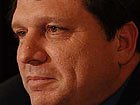
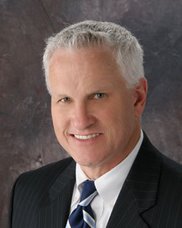


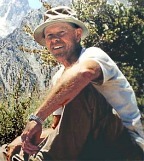
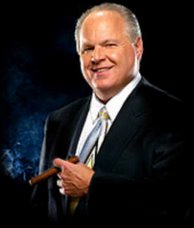

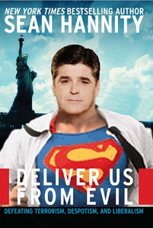

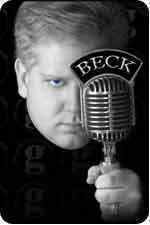

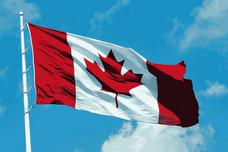


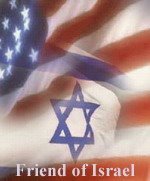




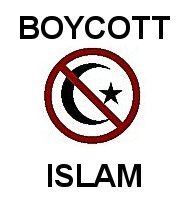
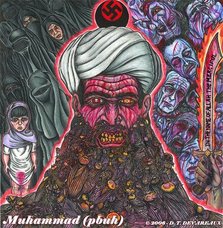
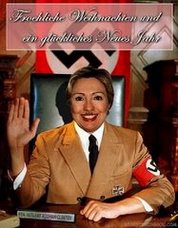

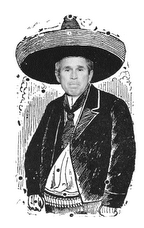


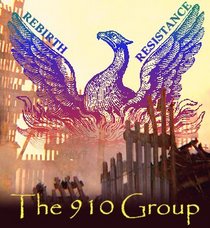

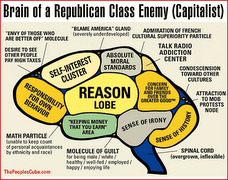
No comments:
Post a Comment